This temple symbolizes the endless wisdom (Ananta Panna) of the Buddha just as the Thatbyinnyu temple symbolizes the omniscience of the Tathagata. Hence the name Ananta, which changed later to Ananda, the name of Buddha’s cousin.
The gilded htee (umbrella) caps the whole at a height of 168 feet above the ground. The interior consists of two vaulted and high but narrow corridors running parallel to each other along the four sides of the temple. They are connected by low and narrow passages in front of the window by which light is admitted and further intersected by four large corridors into which access is obtained through the porticoes.
In the center is an enormous cube, on the four sides of which are deep and high niches enshrining four colossal standing Buddhas of the present world who have appeared and entered Nirvana. The images are represented in the following order: north-Kakusanda; east-Konagamana; south- Kassapa; and west- Gotama. Each of them is 31 feet high above the throne, which itself is nearly 8 feet in height. Of these images only those on the north and south are the original ones contemporary with the foundation of the temple ; those on the east and west were put up later to replace the original images which were destroyed by fire.
Other Interesting features of the temple are the numerous glazed terracotta tiles (left page top) ornamenting the base and the receding terraces which represent the Jataka stories and the hosts of Mara’s army. Each of these plaques is inscribed with a Mon legend. The interior walls are honey-combed with niches in which are set small stone Buddhas in various postures. The most notable among the sculptures is a series of eighty relief’s in the two lower tiers of niches in the outer corridor, illustrating the life of the Bodhisattva from his birth to the attainment of supreme wisdom. The western sanctum also enshrines the life-size statues of its founder, Kyanzittha and the primate, Shin Arahan
Schwidmet Paya (late 20th century)
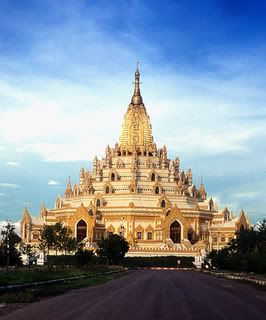

This is a a large octagonal structure on five levels with a gilded corncob-styled amalaka, or clasp from which the finial arises, and topped by the traditional hti, or sacred parasol. The Schwidmet Paya is on the road from the new Mandalay International Airport, about 22 mi (35 km) south of the city, that opened in September, 2000. It is a huge modern facility that seems built for long into the future.
Shwedagon Pagoda, Rangoon
The origins of Shwedagon are lost in antiquity, its age unknown. Long before the pagoda was built, its location on Singuttara hill was already an ancient sacred site because of the buried relics of the three previous Buddhas. According to one legend, nearly 5000 years had passed since the last Buddha walked the Earth, and Singuttara hill would soon lose its blessedness unless it was reconsecrated with relics of a new Buddha. In order that such new relics might be obtained, King Okkalapa of Suvannabhumi spent much time atop the hill, meditating and praying. A series of miracles ensued and eight hairs of the historical Buddha were, somewhat magically, brought to the hill. To enshrine the relics, multiple pagodas of silver, tin, copper, lead, marble, iron and gold where built one on top of the other to a height of twenty meters. During the following centuries, passing from myth to historical fact, the pagoda grew to its present height of ninety-eight meters. Much of the continued construction of Shwedagon was actually reconstruction following disastrous earthquakes. During the 17th century the pagoda suffered earthquake damage on at least eight occasions. A particularly bad quake in 1786 brought the entire top half of the pagoda to the ground and its current shape and height date from the reconstruction of that time.
While much of the pagoda’s beauty derives from the complex geometry of its shape and surrounding structures, equally mesmerizing is its golden glow. The lower stupa is plated with 8,688 solid gold bars, an upper part with another 13,153. The tip of the stupa, far too high for the human eye to discern in any detail, is set with 5448 diamonds, 2317 rubies, sapphires, and other gems, 1065 golden bells and, at the very top, a single 76-carat diamond. Surrounding the pagoda are a plentitude of smaller shrines housing pre-Buddhist spirits called Nats, miracle working images, and even a wish granting stone. The entire temple complex radiates a palpable sense of beauty and serenity.
The Kyaiktyio Rock, Hpa-An / Kyaiktyio
The Kyaiktiyo or Golden Rock Pagoda
is one of the famous destination in Myanmar Burma. Maybe even one of the most famous place of Buddhist pilgrimage in Asia.
The Kyaiktiyo or Golden Rock Pagoda is built on a gilded boulder 25 metres in circumference balanced in what appears to be a very precarious position on a tabular rock jutting out from the Paung-laung ridge of the Eastern Yoma mountains.
This small 18-foot-high Kyaiktiyo or Golden Rock Pagoda is located in the jungle in Kyaikhto Township of Mon State near the Thai boarder town of Mae Sot on Kyaikhtiyo Hill at an elevation of 1100 metres above sea level.
I have fallen in love with these beauties, I wish Ihad taken the time to visit Myanmar when I was in Thailand, but I didn’t…some regrets in life I guess! Hopefully someday I will be able to visit this magical land.
Enjoy!

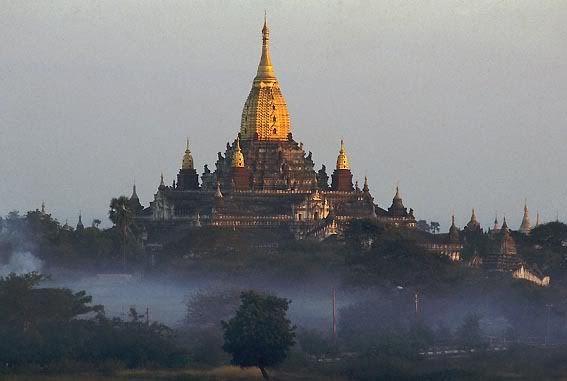
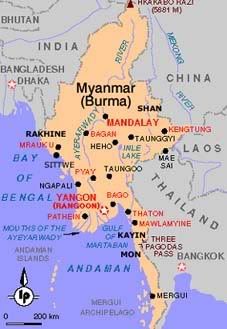
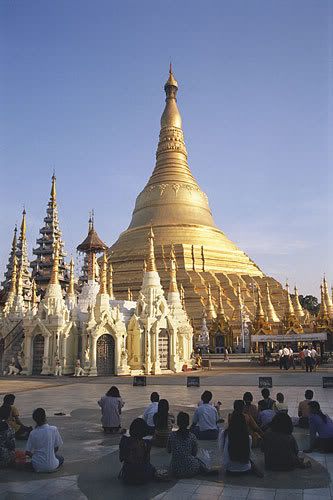
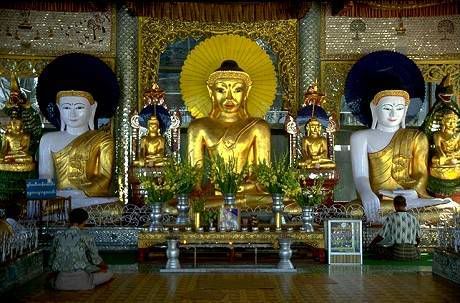
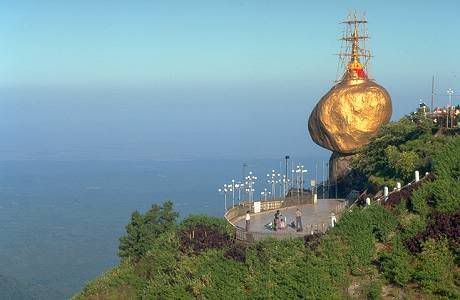
17 comments
Skip to comment form
Author
The capacity that humans have to create beauty with one hand….and destroy each other with the other hand.
Thanks Kris.
For taking the time to create this essay. It’s wonderful.
What a beautiful, ancient culture to be visited by so much terror and bloodshed is one of the supreme tragedies of our modern world. I think perhaps, people won’t be at peace until we are all truly gone!
Simplicity and Beauty. I remember those.
wonderful essay. and ill bet the builders of those temples have some faerie houses on their resumes as well… 😉
i like how you see
that I have read today! Stunning and oh so sad!
Thanks KrisC
a dark age. Globalism could be the coming together, right now, of the world, our slice of reality. Why have we ripped apart the seams that bind us. For what? As a nation a continent, we must answer this and other brutalities of humanity the ones we perpatate or the ones we don’t address for reasons of national interest. A blind eye always looking for a slice of the pie called humanity. Thank you. God help these people God help us all.
The country should live in beauty and harmony forever…..
Brings back the same feeling I had for the bombing of Baghdad….Sadness.
Thank you…
for showing me the details of a world I barely knew existed.